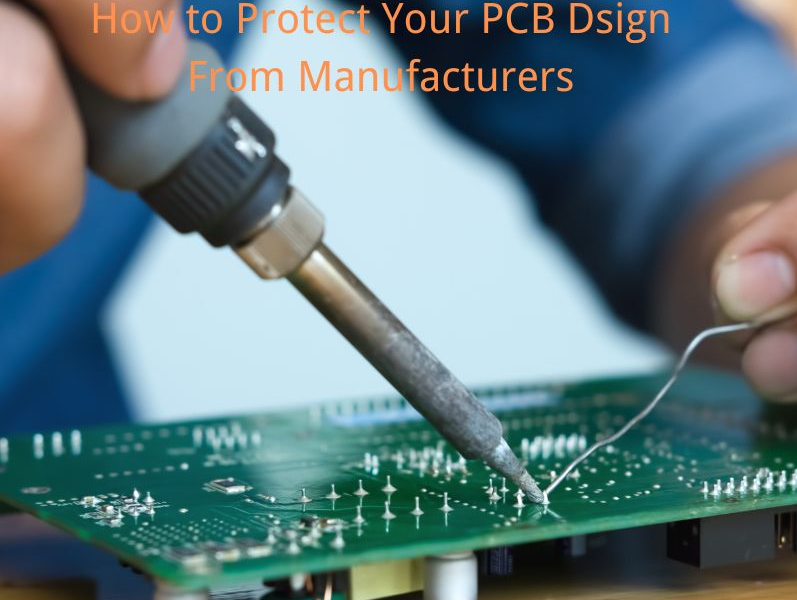
1.Signing a Non-Disclosure Agreement (NDA)
Before collaborating with a manufacturer, ensure that both parties sign a detailed NDA. This agreement should clearly stipulate what information is confidential, under what circumstances the manufacturer can use this information, and the legal responsibilities in case of a breach.
The NDA should be drafted by legal professionals to ensure its legal effectiveness and provide adequate legal protection in case of disputes.
2.Intellectual Property Registration and Protection
Before handing over the design to the manufacturer, register your PCB design patent with the intellectual property authority in your country or region. This will provide you with legal proof of ownership.
The patent application process can be complex, so it is advisable to consult a professional intellectual property lawyer or agency.
3.Restricting Access to Design Files
Only provide the manufacturer with the minimum design information necessary for production. Avoid sharing the complete design history and unnecessary detailed data.
Use secure file transfer methods, such as SFTP (Secure File Transfer Protocol) or encrypted email attachments, to ensure data security during transmission.
4.Hiding or Obfuscating Critical Details
If possible, hide or obfuscate some critical parts of the design that are not essential for production. This can be achieved by deleting or blurring certain layers or components.
This requires careful operation to ensure that the obfuscated design still meets production requirements.
5.Choosing a Trustworthy Manufacturer
When selecting a manufacturer, carefully evaluate their reputation, track record, and customer feedback. Check if they have a history of infringing on intellectual property rights.
Give priority to manufacturers with a good reputation, long-term stability, and a focus on intellectual property protection.
6.Monitoring and Auditing
Regularly audit the manufacturer to ensure compliance with the terms of the agreement and prevent misuse of your design information.
Consider hiring a third-party inspection agency for periodic quality checks and production process audits.
7.Technical Protective Measures
Add watermarks or hidden signatures to the design files to trace any unauthorized copies back to the source.
Use design software with access controls and version tracking for better management of design file distribution and modifications.
8.Legal Recourse
Maintain close contact with a lawyer or legal team to take prompt legal action in case of infringements.
Understand and familiarize yourself with intellectual property-related laws and procedures to protect your rights when necessary.
9.Education and Awareness Raising
Educate and train team members on intellectual property protection, emphasizing the importance of protecting PCB designs.
Stress confidentiality obligations to ensure team members do not unintentionally disclose sensitive information.
10.Backup and Secure Storage
Regularly back up all design files to prevent data loss or corruption. Backups should be stored in a secure location, such as an encrypted external hard drive or cloud storage service.
Use encryption technology to protect stored design files from unauthorized access and theft.
By following these detailed suggestions, you can more effectively protect your PCB designs from being infringed upon by manufacturers or other third parties. Remember, prevention is always better than cure, so take adequate protective measures before collaborating with manufacturers.
Frequently Asked Questions (FAQs)
1. Why should I protect my PCB designs?
PCB designs often contain proprietary information and intellectual property that can be valuable to competitors. Protecting your designs ensures that your hard work and innovation are not misused or copied by others.
2. How can I protect my PCB designs from being copied?
You can protect your PCB designs by signing nondisclosure agreements (NDAs) with manufacturers, registering intellectual property rights, obfuscating critical design details, and regularly auditing manufacturers. Additionally, using secure file transfer methods and storing design files securely can also help.
3. What is a nondisclosure agreement (NDA)?
An NDA is a legal contract between two or more parties that outlines confidential information that the parties wish to share with one another but wish to restrict access to or by third parties. It is often used in business transactions where sensitive information needs to be shared.
4. How do I know if my PCB design has been infringed upon?
If you suspect infringement, you should conduct a thorough investigation. Look for similar products in the market and compare them to your design. If you find striking similarities, you may have a case of infringement. It is advisable to consult a legal professional to assess your options.
5. What legal recourse do I have if my PCB design is infringed upon?
If your PCB design is infringed upon, you may have several legal options, including sending a cease and desist letter, filing a lawsuit, or seeking damages. It is essential to consult a legal professional to determine the best course of action.
6. How can I educate my team on the importance of protecting PCB designs?
You can educate your team on the importance of protecting PCB designs through regular training sessions, workshops, or seminars. Emphasize the value of intellectual property and the potential consequences of infringement. Additionally, provide guidelines on handling confidential information and best practices for securing design files.
7. What are some technical protective measures I can take to secure my PCB designs?
Some technical protective measures you can take include adding watermarks or hidden signatures to design files, using design software with access controls and version tracking, and regularly backing up and securely storing design files.
8. How can I choose a trustworthy manufacturer?
When choosing a trustworthy manufacturer, consider factors such as reputation, track record, customer feedback, and commitment to intellectual property protection. Conduct thorough research, request references, and have open discussions about your expectations and concerns regarding intellectual property protection.
9. What should I do if I accidentally disclose confidential PCB design information?
If you accidentally disclose confidential PCB design information, immediately notify the affected parties and take steps to mitigate the damage. This may include revoking access, changing passwords, or taking legal action against any unauthorized use of the information. Additionally, review your internal processes to prevent such incidents in the future.
